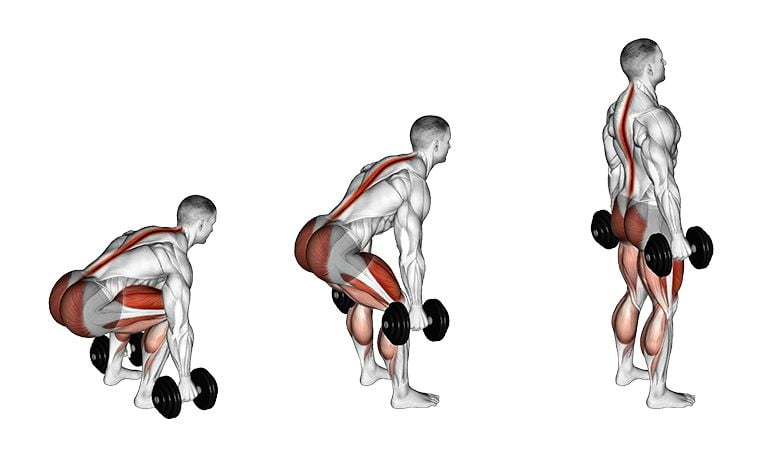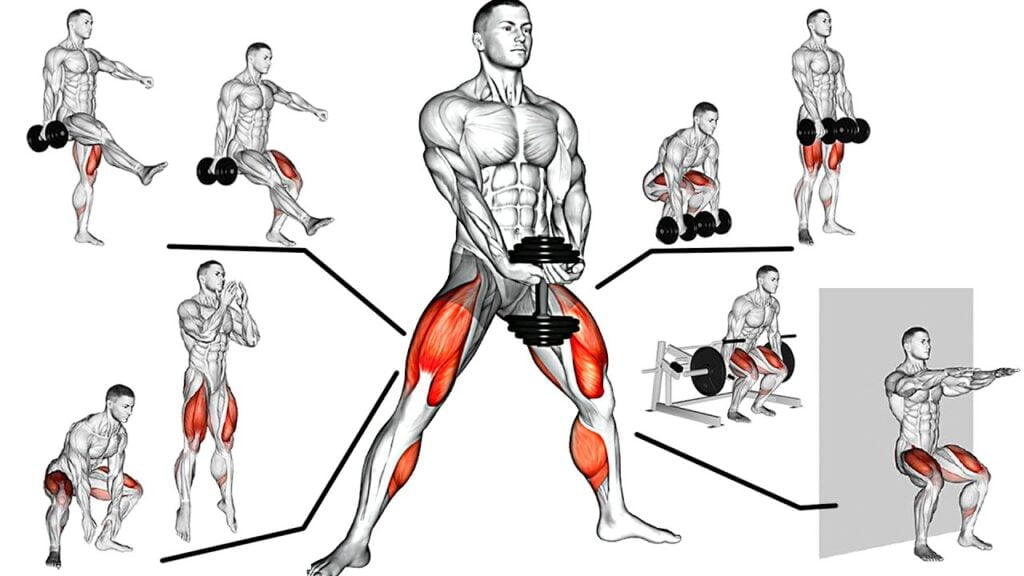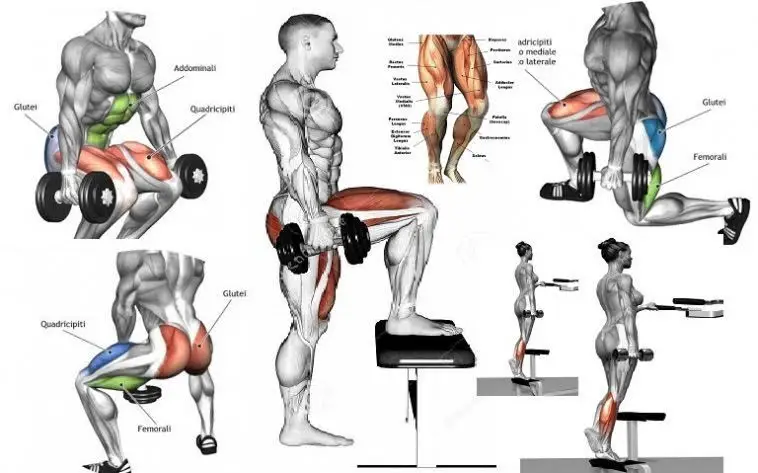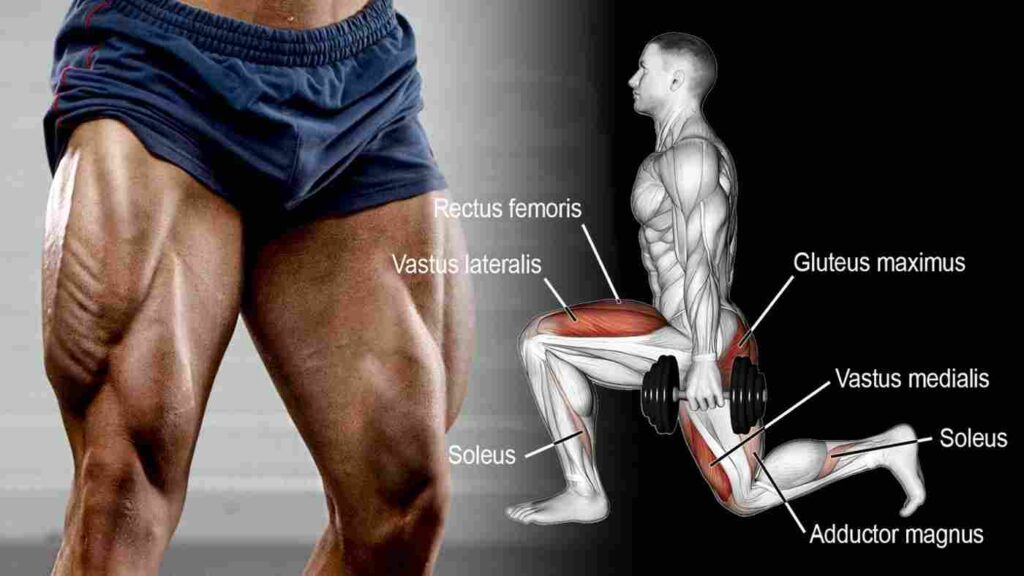Introduction
Running is an incredible way to boost cardiovascular health, stay fit, and enjoy the great outdoors. But what if there was a secret to improving your running game, reducing the risk of injuries, and breaking through performance plateaus? Enter “Cross Training for Runners.” In this comprehensive guide, we’ll explore the world of cross training and how it can revolutionize your running experience.
Whether you’re a seasoned marathoner or a novice jogger, cross training has the potential to make a significant difference in your running journey. We’ll delve into what cross training is, its numerous benefits, and the various types of activities that can complement your running regimen.
What is Cross Training for Runners?
Cross training for runners refers to the practice of incorporating various forms of physical exercise and activities into a runner’s training routine, alongside their regular running workouts. This approach is designed to complement running by targeting different muscle groups, improving overall fitness, and reducing the risk of overuse injuries.
SHOP FOR THE BEST QUALITY RUNNING SHOES ON AMAZON
In essence, cross training allows runners to diversify their training regimen, offering a well-rounded approach to fitness that can enhance their performance and well-being. Cross training activities often encompass a wide range of exercises, such as swimming, cycling, strength training, yoga, and Pilates, among others.
Benefits of Cross Training for Runners
Cross training for runners offers a multitude of benefits that can significantly enhance your running performance, improve overall fitness, and help prevent injuries. Here’s a closer look at the advantages of incorporating cross training into your running routine:
- Injury Prevention: Running is a high-impact activity that can put stress on your muscles and joints. Cross training provides a break from the repetitive motion of running, reducing the risk of overuse injuries like shin splints, stress fractures, and IT band syndrome.
- Improved Strength and Muscle Balance: Cross training engages different muscle groups and helps build overall strength. It targets muscles that running alone may neglect, such as the upper body and core. A stronger body provides better stability and support while running.
- Enhanced Cardiovascular Fitness: Cross training activities like swimming, cycling, and rowing elevate your heart rate and improve cardiovascular endurance. This increased aerobic capacity can translate into better stamina and performance when you return to running.
- Mental Refreshment: Running the same routes day after day can become monotonous. Cross training adds variety to your workouts, keeping you mentally engaged and motivated. It can be a welcome break from the routine of running.
- Faster Recovery: Cross training on rest or recovery days can aid in active recovery. Low-impact activities like swimming or gentle yoga can promote blood flow to tired muscles, reducing soreness and accelerating the healing process.
- Weight Management: Cross training can be an effective tool for weight management. It burns calories and can complement your running routine to help you achieve or maintain a healthy weight.
- Longevity in Running: By reducing the wear and tear on your body, cross training can extend your running career. It allows you to continue enjoying the sport for years without experiencing burnout or chronic injuries.
- Race Preparation: Cross training can play a pivotal role in race preparation. It allows you to maintain fitness while giving your running-specific muscles a break in the lead-up to a race. This tapering period can lead to improved race-day performance.
Incorporating cross training into your running routine doesn’t mean you have to give up running altogether. Instead, it complements your running workouts, helping you become a more well-rounded and injury-resistant athlete.
Best Cross Training Exercises for Runners
Cross-training is a crucial component of a runner’s training regimen, helping to improve overall fitness, prevent injuries, and enhance running performance. Here are some of the best cross-training exercises for runners:
1. Strength Training for Runners

Strength training is a crucial component of cross training for runners as it helps build muscular strength and endurance. Here are some key exercises to incorporate into your routine:
- Squats: Strengthen your lower body, targeting your quadriceps, hamstrings, and glutes.
- Lunges: Work on your leg muscles, emphasizing stability and balance.
- Deadlifts: Engage your posterior chain, including your glutes, hamstrings, and lower back, to improve overall power and running economy.
- Core exercises: Planks, Russian twists, and bicycle crunches are effective for developing core strength and stability.
2. Cycling

Pedaling Towards Better Performance Cycling is a low-impact activity that complements running, providing an excellent cardiovascular workout while reducing the strain on your joints. Consider the following:
SHOP FOR THE RESISTANCE BAND ON AMAZON
- Outdoor cycling: Take your bike out for a spin on scenic routes, enjoying the fresh air and varying terrain.
- Indoor cycling: Join a spinning class or invest in a stationary bike for a convenient and effective workout at home.
- Intervals: Incorporate interval training into your cycling sessions to mimic the intensity changes experienced during running.
3. Swimming

Dive into Cross Training for Runners Swimming is a highly effective cross training activity that engages your entire body and improves cardiovascular fitness. Its low-impact nature makes it ideal for active recovery and injury prevention. Consider the following:
- Freestyle swimming: Focus on building endurance and rhythm.
- Water running: Mimic the running motion in the water by wearing a flotation belt, reducing impact while providing resistance.
- Pool workouts: Incorporate interval training or try water aerobics classes to add variety to your swimming routine.
4. Yoga and Pilates

Enhancing Flexibility and Core Strength Yoga and Pilates offer numerous benefits for runners, including improved flexibility, core strength, and body awareness. Consider the following practices:
SHOP FOR THE YOGA MAT ON AMAZON
- Yoga for runners: Focus on poses that target the hips, hamstrings, and calves, such as downward dog, pigeon pose, and standing forward fold.
- Pilates for runners: Engage in exercises that strengthen the core, stabilize the pelvis, and improve overall posture.
5. CrossFit

The All-Rounder Workout CrossFit workouts incorporate various functional movements, such as weightlifting, cardio exercises, and bodyweight movements, to provide a well-rounded fitness routine. Consider the following:
- Consult a certified CrossFit coach who can guide you through the proper form and programming suitable for runners.
- Emphasize exercises that target the posterior chain, core, and upper body, complementing the demands of running.
6. HIIT (High-Intensity Interval Training)

Boosting Stamina and Speed HIIT workouts involve short bursts of high-intensity exercise alternated with recovery periods. HIIT training offers multiple benefits for runners, including increased anaerobic capacity and improved running economy. Consider the following:
- Sprint intervals: Incorporate short sprints followed by periods of active recovery, such as jogging or walking.
- Tabata training: Perform exercises, such as burpees, mountain climbers, or jump squats, at high intensity for 20 seconds, followed by 10 seconds of rest, repeating for multiple rounds.
SHOP FOR THE STABILITY BALL ON AMAZON
Remember, the best cross-training exercises for you may vary based on your fitness level, goals, and any existing injuries or limitations. It’s essential to listen to your body, gradually incorporate cross-training into your routine, and consult with a fitness professional or physical therapist if you have specific concerns or needs.
How to Incorporate Cross Training into Your Running Routine
Incorporating cross training into your running routine is a smart move that can help you improve your performance, prevent injuries, and keep your workouts fresh and exciting. Here’s a step-by-step guide on how to do it effectively:
Frequency and Timing
When incorporating cross training into your running routine, aim for two to three sessions per week. Spread them out evenly throughout the week, ensuring sufficient recovery time between cross training and running sessions.
Balancing Cross Training with Running
To strike a balance between cross training and running, consider the following tips:
- Alternate hard running days with low-impact cross training days to allow for adequate recovery.
- Schedule cross training sessions on days when you have harder or longer runs planned to avoid overloading your body.
- Experiment with different combinations and find what works best for your individual needs and goals.
Listen to Your Body: Avoid Overtraining
Pay attention to your body’s signals and adjust your training accordingly. Overtraining can lead to fatigue, decreased performance, and increased risk of injury. Be mindful of the following signs:
- Persistent muscle soreness or joint pain
- Elevated resting heart rate
- Decreased motivation or enjoyment of running
- Frequent illness or prolonged recovery periods
Nutrition for Cross Training and Running
Nutrition plays a vital role in supporting your cross training and running endeavors. Proper fueling and hydration can optimize your performance, aid in recovery, and keep your body functioning at its best. Here are some important aspects to consider:
The Role of Nutrition in Performance
Fueling your body with the right nutrients is essential for optimal performance during cross training and running sessions. Key considerations include:
- Macronutrients: Understanding the importance of carbohydrates, proteins, and fats in providing energy, supporting muscle repair, and promoting overall health.
- Micronutrients: The role of vitamins, minerals, and antioxidants in supporting immune function, reducing inflammation, and maintaining overall well-being.
- Timing: The significance of pre-workout and post-workout nutrition to provide energy, support muscle recovery, and optimize performance.
Pre and Post-Workout Nutrition Tips
To maximize your workouts and aid in recovery, consider the following tips:
- Pre-workout meals: Consume a balanced meal containing carbohydrates for energy, lean proteins for muscle repair, and healthy fats for sustained energy. Allow time for digestion to avoid discomfort during exercise.
- Pre-workout snacks: If your training sessions are closer to mealtime, opt for lighter snacks rich in carbohydrates and a small amount of protein to fuel your workout.
- Post-workout meals: Consume a combination of carbohydrates and proteins within the first 30-60 minutes after exercise to replenish glycogen stores, promote muscle repair, and aid in recovery.
Hydration Strategies for Cross Training and Running
Proper hydration is crucial for maintaining performance and preventing dehydration. Consider the following hydration strategies:
- Fluid intake: Drink water regularly throughout the day to maintain hydration levels.
- Electrolyte balance: During prolonged or intense workouts, replenish electrolytes lost through sweat by consuming electrolyte-rich beverages or adding electrolyte supplements to your water.
- Pre-hydration: Ensure you are well-hydrated before your workouts by drinking water in the hours leading up to your session.
- During exercise: Drink fluids regularly during workouts, especially for longer training sessions or in hot weather conditions.
Fueling for Endurance
Carbohydrates, Proteins, and Fats: Endurance training, whether through cross training or running, requires proper fueling to sustain energy levels. Consider the following guidelines:
- Carbohydrates: Consume complex carbohydrates such as whole grains, fruits, and vegetables to provide a steady release of energy. Prioritize carbohydrate-rich meals or snacks before longer training sessions.
- Proteins: Include lean sources of protein such as chicken, fish, beans, or tofu in your meals to support muscle repair and recovery.
- Fats: Incorporate healthy fats from sources like nuts, seeds, avocados, and olive oil to provide sustained energy and support overall health.
Supplements for Runners and Cross Training Athletes
While a well-balanced diet should provide most of the necessary nutrients, some runners and cross training athletes may benefit from certain supplements. It’s important to consult with a healthcare professional or registered dietitian before incorporating any supplements into your routine. Some supplements to consider include:
- Sports drinks or electrolyte supplements for maintaining electrolyte balance during intense or prolonged workouts.
- Protein supplements or powders to supplement protein intake if it’s challenging to meet daily requirements through whole foods alone.
- Omega-3 fatty acid supplements for their anti-inflammatory properties and potential benefits in promoting joint health and recovery.
SHOP FOR THE BEST PROTEIN POWDER ON AMAZON
Remember, individual nutritional needs may vary, and it’s essential to listen to your body and experiment to find what works best for you. Proper nutrition and hydration are key components in optimizing your cross training and running performance while supporting overall health and well-being.
Cross Training for Specific Running Goals
Cross training can be tailored to specific running goals, allowing you to focus on areas that are critical for your desired outcomes. Here are some key considerations for different running goals and how cross training can support them:
Cross Training for Endurance Running
Endurance running, such as long-distance races or ultramarathons, requires exceptional aerobic capacity and the ability to maintain a steady pace for extended periods. To enhance your endurance, consider incorporating the following cross training exercises:
- Cycling: Long rides at a moderate intensity can improve cardiovascular fitness without the impact of running.
- Swimming: Engage in longer swim sessions to build endurance and improve breathing efficiency.
- HIIT workouts: Include interval sessions that mimic the fluctuations in intensity experienced during endurance running.
Cross Training for Speed and Sprinting
If your goal is to improve your speed and sprinting abilities, cross training exercises that focus on power, explosiveness, and quick muscle activation can be beneficial. Consider the following:
- Plyometric exercises: Jump squats, box jumps, and bounding exercises improve lower-body power and quick muscle contractions.
- HIIT workouts: Incorporate high-intensity intervals with sprints to improve your anaerobic capacity and speed.
- Strength training: Include exercises like weighted squats, lunges, and deadlifts to build lower-body strength, which translates to more power and speed during sprints.
Cross Training for Trail Running
Trail running places additional demands on your body due to uneven terrain, inclines, and varying surfaces. To excel in trail running, consider these cross training activities:
- Strength and balance training: Incorporate exercises that target your core, glutes, and stabilizer muscles, such as single-leg squats, step-ups, and stability ball exercises.
- Functional training: Include exercises that simulate the challenges encountered during trail running, such as lateral lunges, lateral bounds, and agility ladder drills.
- Hiking and hill workouts: Regularly incorporate hikes or hill repeats to improve uphill and downhill running efficiency.
Cross Training for Marathon Preparation
Marathon training requires a combination of endurance, strength, and recovery. Cross training can play a crucial role in supporting marathon preparation:
- Low-impact cardio activities: Cycling, swimming, and elliptical training can provide aerobic conditioning without excessive impact on your joints, allowing for active recovery.
- Strength training: Focus on exercises that target the major muscle groups, especially the legs and core, to improve overall strength and running economy.
- Recovery-focused activities: Incorporate activities like yoga, Pilates, and foam rolling to aid in recovery, improve flexibility, and prevent overuse injuries.
Cross Training for Injury-Prone Runners
For runners who are prone to injuries, cross training can be a valuable tool for strengthening weak areas and reducing the risk of recurring issues. Consider the following:
- Strength training: Target muscle groups that are commonly weak in runners, such as the glutes, hips, and core, to improve stability and prevent imbalances.
- Low-impact activities: Swimming, water running, and cycling provide cardiovascular workouts with minimal stress on the joints.
- Injury prevention exercises: Incorporate exercises specific to your injury history or areas of vulnerability, such as IT band stretches, ankle strengthening exercises, or hip mobility drills.
Remember, when training for specific running goals, it’s essential to strike a balance between cross training and running. Tailor your cross training activities to support your primary objectives while considering factors such as training volume, intensity, and recovery needs. Working with a coach or trainer can provide valuable guidance in designing a cross training program that aligns with your specific running goals.
FAQs
Q.1 What is Cross Training for Runners?
Ans. Cross training for runners refers to engaging in alternative exercises and activities that complement running, aiming to improve overall fitness, prevent injuries, and enhance performance.
Q.2 Can Cross Training Improve Running Performance?
Ans. Yes, cross training can improve running performance by enhancing cardiovascular fitness, strengthening muscles, preventing overuse injuries, and providing mental refreshment.
Q.3 Is Cross Training for Runners Suitable for Beginners?
Ans. Absolutely! Cross training is beneficial for runners of all levels, including beginners. It helps establish a solid foundation of overall fitness, reduces injury risk, and gradually builds strength and endurance.
Q.4 How Often Should I Incorporate Cross Training into My Running Schedule?
Ans. Incorporate cross training sessions into your running schedule two to three times per week. Adjust the frequency based on your individual needs, considering factors such as running goals, fitness level, and recovery capacity.
Q.5 Can Cross Training Help Prevent Running Injuries?
Ans. Yes, cross training can help prevent running injuries by reducing the repetitive stress on your body, strengthening supporting muscles, and addressing muscle imbalances that may lead to overuse injuries.
Q.6 What Are Some Examples of Cross Training Exercises for Runners?
Ans. Some examples of cross training exercises for runners include strength training, cycling, swimming, yoga, Pilates, CrossFit workouts, and high-intensity interval training (HIIT).
Conclusion
Cross training for runners offers a multitude of benefits, from improved fitness and injury prevention to enhanced performance and mental rejuvenation. By incorporating a variety of cross training exercises into your running routine, you can achieve a well-rounded fitness profile, overcome plateaus, and reach new milestones in your running journey.
Remember to listen to your body, find the right balance, and enjoy the process of exploring new activities that complement your love for running. Unleash your potential through cross training and witness the transformative impact it can have on your running abilities.

Good day, and welcome to Fitthour. My name is Shubham Vijay, and I am a certified personal trainer and nutrition coach with 6 years of experience in the fitness industry. At Fitthour, we specialize in types of training, such as strength training, cardio, or HIIT, and our mission is to help clients achieve their fitness goals and improve their overall health.




